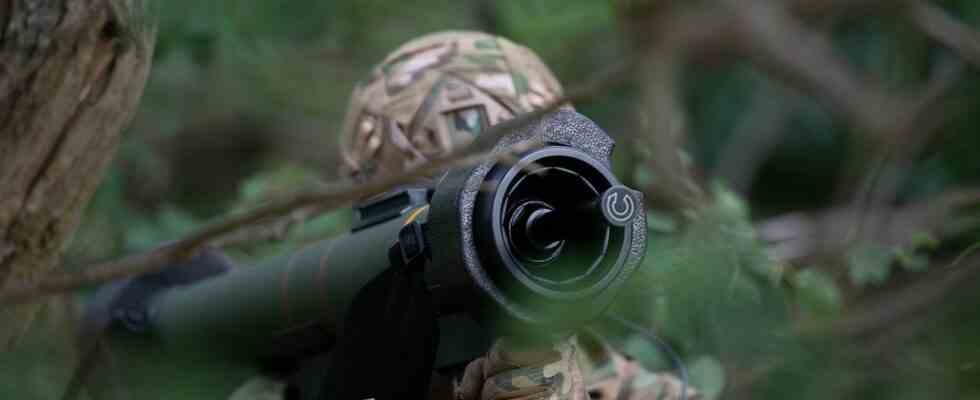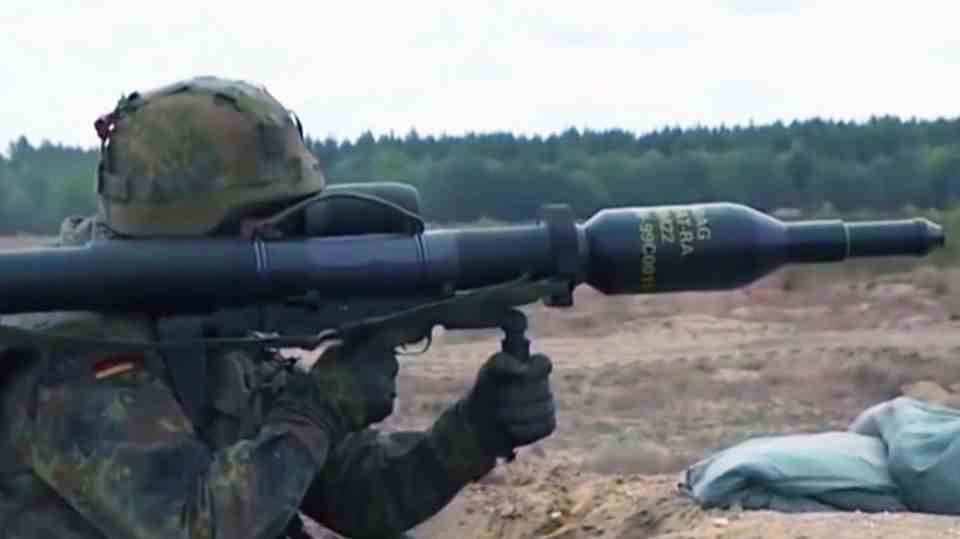war in Ukraine
RGW90 – Ukraine gets another 2650 anti-tank weapons from Germany
Small, light with high firepower – the RGW90.
© DND / PR
Dynamit Nobel Defense supplies the RGW90 portable missile launcher. Kyiv has ordered a variant for urban warfare – the warhead can disable tanks and at the same time crack through walls and bunkers.
And it works. After the Panzerfaust 3, Ukraine will receive 2,650 RGW90 anti-tank weapons from Germany. While the Panzerfaust was supplied from the Bundeswehr stocks, the RGW90 comes directly from the manufacturer Dynamit Nobel Defense (DND). Nobel also makes the Panzerfaust 3. Both systems are not anti-tank guided missiles that track their target independently like Javelin, TOW or the older Milan system. The shooter must aim, fire and hit the target.
In the basic concept both weapons differ. The Panzerfaust 3 has the cartridge clipped onto the front of the shoulder piece – making it similar to Russian RPGs and the WWII model, the original Panzerfaust. On the newer RGW90, the warhead is launched out of a tube – much like the US Army’s bazooka or its German equivalent, the Panzerschreck. Both weapons are thrust-launched from the shoulder, but are intended not to burn the shooter upon launch. A problem that does not arise with a guided missile, it only has to “pop out” of the launcher and can then go around at a distance.
Light weapon for short distances
At a theoretical combat distance of 500 meters, it can penetrate more than 600 millimeters of armor steel. It should be noted that 600 millimeters is a standard value and modern armor achieves the same protection with less thickness. The hit probability is 90 percent on a 2.3 meter x 2.3 meter NATO standard target. With moving targets, the effective range is greatly reduced because the weapon cannot track the target. The RGW90 is not intended for long-distance, but for short distances, it can be used from 20 meters and can also be fired from relatively small enclosed spaces. The RGW90 is about one meter long and weighs about ten kilograms. The “tube” has a caliber of 90 millimeters, but the warheads can be wider. The RGW90 comes standard with a mono-shaped anti-armour charge warhead.
The RGW 90 AS variant is equipped with a two-stage warhead. He can break through protective covers and then destroy the target behind. Here the range is between 10 and 400 meters. The RGW-90WB is used as a bunker buster against masonry and concrete. Ukraine has the RGW90 HH [HEAT/HESH] A2 ordered. It is equipped with a mono-shaped charge warhead that can be used against both armored vehicles and masonry. All “small” anti-tank weapons work on the principle of a shaped charge. It does not work outwards through an explosive effect. If the warhead hits the target, a targeted detonation starts inside (shaped charge), the entire effect of the explosive device works inwards and drives a metal spike through the armor. The charge acts as an explosive hammer that propels the spike.
Similar to Panzerfaust 3
Like the Panzerfaust 3, the RGW90 has received less attention than the smart self-guided anti-tank missiles (ATGM). For the infantry, the RGW90 is an important addition, giving a squad of soldiers a lot of firepower with little weight. A firepower that does not need to be called up, but can be used immediately. In particular, the dual-use anti-tank and anti-concrete warhead is tailor-made for the fighting in Ukraine, which often takes place in confined spaces in urban areas. ATGMs have a much longer range, but cannot be used effectively at ranges between 20 and 50 meters. The RGW90 can also be carried ready to fire and is not specialized for tanks. The explosive effect is used to prepare for storming houses. In urban combat, the RGW90 is often not aimed directly at the enemy, it is used to quickly break through walls for your own troops.
It’s not unique. Both Ukrainian and Russian troops are currently using the RPO Shmel rocket launcher in Mariupol. The latest version, the RPO-M, uses a thermobaric warhead and achieves the destructive power of a heavy artillery shell. Unlike manpads against air targets, such weapons are quickly consumed in large numbers in combat.




